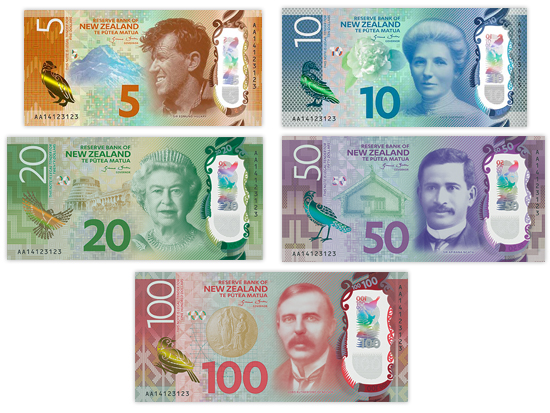The Reserve Bank is the sole supplier of New Zealand banknotes. We act as a wholesale distributor to the trading banks, and manage the design and manufacturing of the banknotes.
New Zealand has two sets of banknotes in circulation – Series 6 and the new Series 7. Both sets have five denominations: the $5, $10, $20, $50 and $100 banknote.
Series 7 $5 and $10 banknotes were released in October 2015 and the remaining three denominations will be released in May 2016.
Polymer banknotes
New Zealand's banknotes are printed on polymer, which is a type of polypropylene plastic.
The Reserve Bank began circulating polymer banknotes in May 1999. Until then, New Zealand's banknotes were printed on paper made from cotton.
The advantages of polymer are:
- The average polymer note lasts about four times as long as a paper note. This keeps the cost of producing money down.
- Polymer notes are stronger and non-porous, so they do not get as dirty as paper.
- It is easier to make a polymer note secure than a paper note, therefore deterring forgers.
- Disposal of polymer notes is more environmentally friendly. Polymer notes are destroyed by being shredded. The shredded notes can be recycled into other plastic products instead of being buried or burnt.
Series 7





